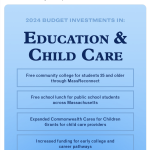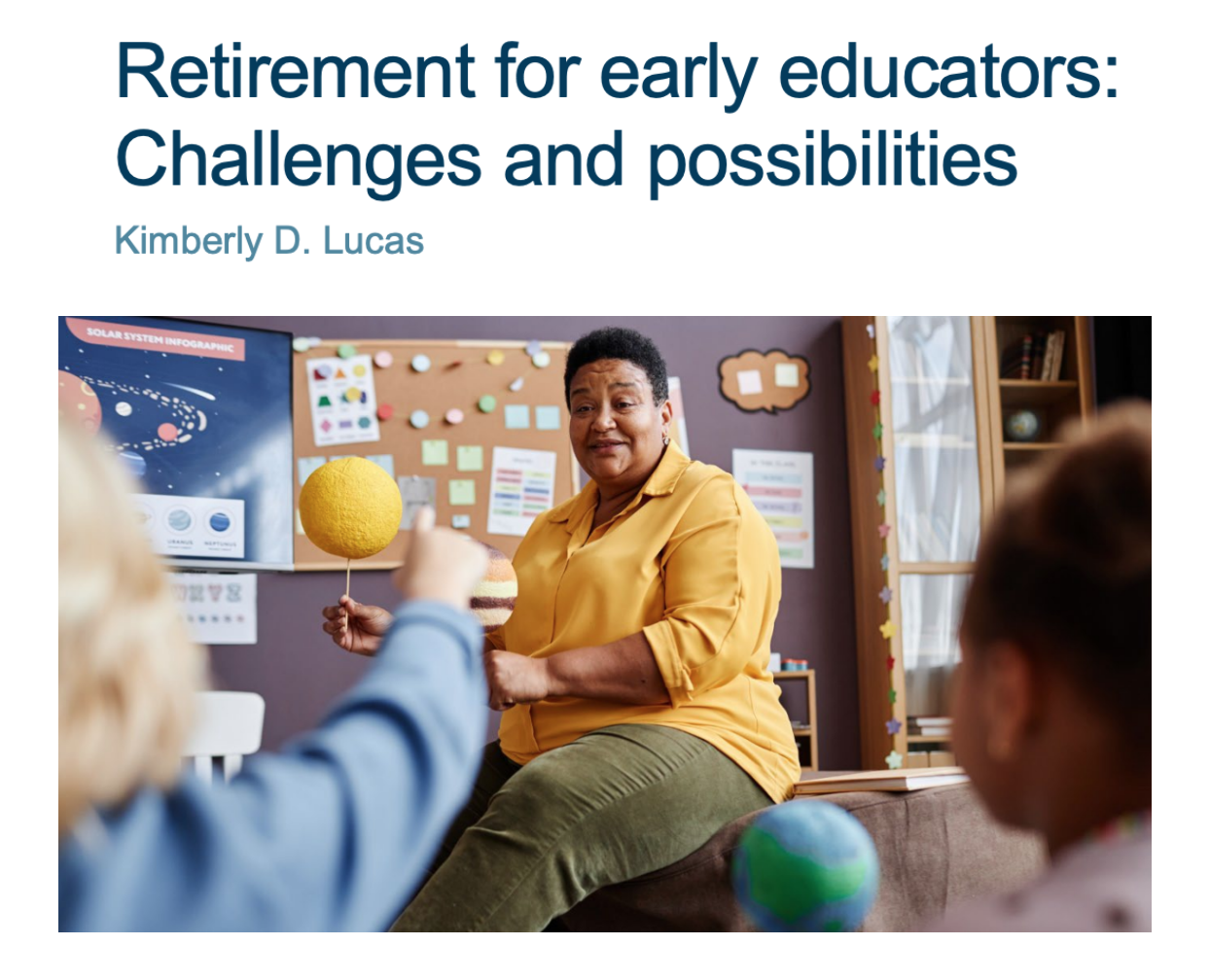
While early educators are busy engaging young children, Northeastern University professor Kim Lucas has been focused on the other end of the age spectrum, thinking about how early educators can have enough financial stability to retire.
In a new policy brief, Lucas explains that she wants to understand the barriers to and the potential for “funding and delivering retirement plans†for early educators.
“There’s a lot that goes into packaging what a good job looks like,†Lucas says in a Federal Reserve article about her brief. “So, I think any type of policy solution that solves the compensation issue is going to actually be multiple solutions, and retirement benefits can and should be part of it.â€
The need is considerable. Because early educators earn low salaries, their earnings largely go toward paying bills, not saving for retirement. And even when early educators can save, Lucas points out, they can have a tough time navigating the complexities of retirement saving products.
This combination of low salaries and limited benefits takes a toll. As Lucas writes, the Massachusetts Association for the Education of Young Children (MAAEYC) found in a survey of its members that 31% felt “the lack of benefits, including retirement benefits, contributed to their consideration of leaving†the field.
Building a strong, fair retirement system will essentially mean, as the Federal Reserve article notes, “starting from scratch,†because “only 1 in 10 child care workers have such benefits, and Lucas found just two initiatives nationwide focused specifically on them.â€
Because child-care businesses and early educators don’t have the “financial capital and resource support to participate in retirement efforts†government and philanthropy will have to step in.
Fortunately, there are good examples of joint efforts. One example is San Francisco’s former C-WAGES program, which supplemented early educators’ incomes by, in part, investing public dollars into early educators’ retirement accounts.
Another example is a pilot program funded by the Neil and Louise Tillotson Fund in Coös County, New Hampshire. This program includes “a matched savings account, in which the Tillotson Fund provides match dollars for early-educator savings for specific goals, including retirement.â€
The program is small, but innovative. As Lucas notes:
“While uptake by the county’s approximately 75 early educators has yet to exceed 40%, those who do participate overwhelmingly save for retirement, which receives a two-to-one match. Match dollars go directly to a third party (in this case, into a retirement savings vehicle); this was designed specifically because, as a representative of the Tillotson Fund noted, ‘The cliff effect is a huge issue for these primarily women working in this sector, so any bump in income can result in losing SNAP benefits or fuel assistance.… [We are] really being intentional about how we structure these benefits so we’re not having unintended consequences for these folks.’ â€
Unions, Lucas writes, also have a role to play.
In Massachusetts, the Service Employees International Union [SEIU] Local 509 found in a survey of its members that 65.7% “named retirement as an important issue, making it one of the union’s top three priorities, alongside additional paid-time-off days and an increased reimbursement rate for subsidized slots.â€
“This priority has sparked a two-pronged approach for SEIU 509, where its collective-bargaining efforts with the Department of Early Education and Care are augmented by a legislative agenda.â€
Unfortunately, “collective bargaining is likely to be ineffective because child-care businesses are often contractors with the Commonwealth, rather than employees, and thus are not entitled to include benefits in their bargaining. The legislation would allow for an exception for these specific child-care contractors to take part in state benefits programs, providing not only the potential for financial capital (via collective bargaining) but also the retirement vehicle (via legislation).â€
Creating a retirement system for early educators will be challenging, but Lucas argues that now is the time to act.
“As we turn toward a post-pandemic economy, early educators’ jobs must be one of the first that we shore up in order to ensure a solid foundation for other work to stand on. Right now, we need solutions that improve labor-force participation—both among families (specifically women) and within the child-care sector itself. We have the opportunity to reimagine the way we do work such that we might value the people and the work that we may have undervalued or underrecognized in a pre-pandemic world.â€
It is essential to explore “feasible, viable retirement plans†to produce “equitable employment options — and good jobs.â€



